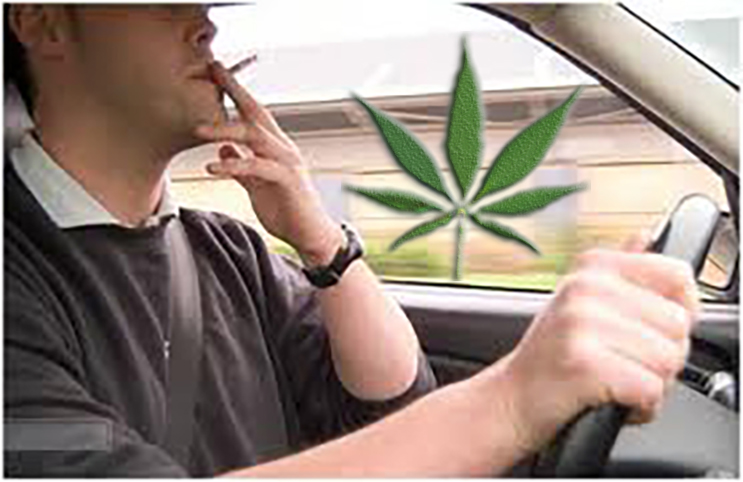Just three years ago, marijuana was illegal for recreational use nationwide. That changed when voters in Colorado and Washington legalized it in 2012. Oregon, Alaska. and the District of Columbia passed similar legislation last year.
Philadelphia has reduced possession of a small amount of marijuana to a $25 citation, and Mayor-elect Jim Kenney — South Philly Mummer turned pot-friendly progressive — has said he would like to eliminate weed citations altogether.
A total of 23 states have passed medical-marijuana laws, and, at least, five more are expected to vote on recreational-use ballot questions next year. Smoke it for your glaucoma. Smoke it to chill. Or don’t smoke it at all. But pot is here to stay. It’s likely only a matter of time before most American adults can get a prescription for marijuana or buy it as easily as a six-pack of beer.
But things get murky when it comes to driving. Motor-vehicle laws have not kept pace with the legalization trend. The problem: Marijuana’s main psychoactive component, THC, remains in the blood longer than alcohol, so you could get busted for drugged driving well after the effects of your last joint have passed.
Mike Lynn, an emergency-room doctor and reserve deputy sheriff in California, wants to change that. The proposed solution: a pot breath analyzer. Lynn is chef executive of Oakland-based Hound Labs, which announced in December it had developed technology that can determine with one or two breaths whether someone has recently smoked marijuana.
The company is working with scientists at the University of California, Berkeley, to build a handheld device that cops could use for roadside tests — to test for alcohol and marijuana.
“We are creating this marijuana breathalyzer that not only detects THC in breath but also measures the level,” said Lynn. “By measuring levels, you can actually start correlating those levels with true driving impairment, then create standards like we have with alcohol.”
Lynn said THC remains in someone’s breath for only two to three hours. Blood tests, such as those used by Philadelphia police, often can detect THC or its metabolites many hours — or, sometimes, days — after smoking. Lynn said that makes it difficult to distinguish between a chronic user who smoked the day before driving and someone who was ripping a bong just before getting behind the wheel.
“People are worried they’re going to be arrested for testing positive when they’re not impaired. But we don’t want people that are truly stoned on the road,” Lynn said. “This is a way of helping solve that problem.”
Hound Labs plans to start clinical trials early next year with the University of California, San Francisco, and San Francisco General Hospital, and conduct tests with law enforcement officials. The breathalyzer could be on the market by the end of 2016.
“We need to identify those people that shouldn’t be driving. This is about saving lives and preventing tragedies,” Lynn said. “The guy that smoked yesterday and didn’t get behind the wheel, that’s not the person we’re focused on at all.”
Hound Labs isn’t the only company working on this technology, but it says its prototype can accurately measure THC levels using a proprietary method that is more than one million times more sensitive than alcohol breathalyzers.
But some cannabis activists, drug-recognition experts, and law enforcement officials are skeptical.
Chris Goldstein, a PhillyNORML board member who last year lobbied Kenney, then a councilman, to decriminalize marijuana in Philadelphia, calls the breathalyzer “both the holy grail and the unicorn of regulation and law enforcement when it comes to marijuana.”
Cops would love to have an instrument that could instantly confirm a suspicion that someone is high. But establishing an impairment threshold for marijuana has been elusive.
What does it actually mean to be stoned? Can the effects of marijuana be reduced to a single number on a machine, like those of alcohol?
“The real crux of the issue is that there is no standard for what actually constitutes impairment for marijuana,” Goldstein said. “The science is just not there yet to show us what real impairment means.”
Pot affects people differently. A regular user could be several times over Pennsylvania’s ultra-strict threshold — one nanogram of THC per milliliter of blood — and demonstrate little to no impairment. But someone who rarely smokes could be high as a kite with a THC level in the same range.
Different strains of marijuana can produce sedative or uplifting effects with varying cognitive impact. Some tend to induce “couch lock” and dull the senses, while others can spur creativity and heighten awareness.
“Unlike alcohol, the impairment standard can be very different among individuals,” Goldstein said.
George Geisler, a drug-recognition expert who provides technical assistance to Pennsylvania law enforcement officials, said a breathalyzer that only detects marijuana smoked within a few hours could cast a narrow net — clearing drivers who perhaps shouldn’t be on the road, due to the lingering effects of smoking.
Geisler, who has examined drugged drivers at Philadelphia DUI checkpoints, said that in his experience, the “Cheech and Chong effect” of marijuana might last only a few hours, but it can affect a person’s attention span and the ability to perform complex tasks significantly longer.
“Although it has short-term effects as far as obviously being impaired, the psychophysical impairment we see lasts up to 24 hours, and I’ve seen that personally,” Geisler said.
Philadelphia Police Sgt. Joseph Rossa of the Accident Investigation Division said relying on a breathalyzer for marijuana would miss other drugs that would be caught by a drug test, such as PCP and Xanax.
“When we do blood, it tells us pretty much everything that’s in there. I see it more as limiting,” Rossa said of the pot breathalyzer.
“It might be good for parents to buy to see if their kids are getting high,” he said. “Maybe they’re looking at the wrong market.”
Kenney spokeswoman Lauren Hitt said, “The data on whether relaxing marijuana laws increases impaired driving is still very rudimentary since this trend of relaxing marijuana laws is relatively new. But we’re monitoring it, and if there’s a clear causal connection then we’ll look for ways to address it.”
Lynn, of Hound Labs, said the next step is to use his device to evaluate how well a person can operate a vehicle on a course at varying THC levels.
He hopes that will lead to a discussion about the need for national marijuana-impairment standards that are more accurate than current tests using blood or oral swabs.
“It’s really pretty darn arbitrary,” Lynn said of current testing methods.
Robert McGrory, a former California Highway Patrol lieutenant whose son was killed by a driver who tested positive for marijuana use, said the Hound Labs breathalyzer would expose stoned drivers who argue — either on the road or in court — that the THC in their blood is days old.
“It will totally eliminate that argument,” said McGrory, who has been working with Lynn in developing the breathalyzer. Conversely, he said, “it’s going to help us not arrest people that shouldn’t be arrested.”
Dwight Helmick, a former California Highway Patrol commissioner who is working with Hound on the breathalyzer, said cops need to be prepared if increased marijuana availability leads to an uptick in stoned driving.
Helmick said he tries to avoid the debate over legalization, mostly because it’s a moot point.
“The reality is, it’s coming,” he said, “so my concern is the safety of the motoring public.”
MAPH Enterprises, LLC | (305) 414-0128 | 1501 Venera Ave, Coral Gables, FL 33146 | new@marijuanastocks.com










